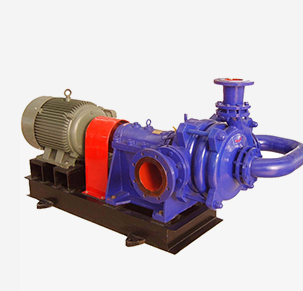English
- Afrikaans
- Albanian
- Amharic
- Arabic
- Armenian
- Azerbaijani
- Basque
- Belarusian
- Bengali
- Bosnian
- Bulgarian
- Catalan
- Cebuano
- Corsican
- Croatian
- Czech
- Danish
- Dutch
- English
- Esperanto
- Estonian
- Finnish
- French
- Frisian
- Galician
- Georgian
- German
- Greek
- Gujarati
- Haitian Creole
- hausa
- hawaiian
- Hebrew
- Hindi
- Miao
- Hungarian
- Icelandic
- igbo
- Indonesian
- irish
- Italian
- Japanese
- Javanese
- Kannada
- kazakh
- Khmer
- Rwandese
- Korean
- Kurdish
- Kyrgyz
- Lao
- Latin
- Latvian
- Lithuanian
- Luxembourgish
- Macedonian
- Malgashi
- Malay
- Malayalam
- Maltese
- Maori
- Marathi
- Mongolian
- Myanmar
- Nepali
- Norwegian
- Norwegian
- Occitan
- Pashto
- Persian
- Polish
- Portuguese
- Punjabi
- Romanian
- Russian
- Samoan
- Scottish Gaelic
- Serbian
- Sesotho
- Shona
- Sindhi
- Sinhala
- Slovak
- Slovenian
- Somali
- Spanish
- Sundanese
- Swahili
- Swedish
- Tagalog
- Tajik
- Tamil
- Tatar
- Telugu
- Thai
- Turkish
- Turkmen
- Ukrainian
- Urdu
- Uighur
- Uzbek
- Vietnamese
- Welsh
- Bantu
- Yiddish
- Yoruba
- Zulu
Telephone: +86 13120555503
Email: frank@cypump.com
Nov . 17, 2024 15:06 Back to list
submersible pum
Understanding Submersible Pumps An Essential Tool for Fluid Management
Submersible pumps are powerful machines designed to function while immersed in fluids, such as water, chemicals, or sewage. These pumps play a critical role in various applications, including municipal water systems, industrial processes, and residential systems. Their unique design and functionality offer several advantages over traditional pumps, making them a preferred choice for many fluid management tasks.
Design and Functionality
A submersible pump consists of a sealed motor and a pump body that operates underwater. The motor is hermetically sealed to prevent water from damaging the internal components, while the pump’s impellers are designed to push water upwards to the surface. This design allows submersible pumps to eliminate the need for suction lines, which can limit efficiency. Instead, these pumps can operate directly at the source of the liquid, effectively reducing the chances of cavitation—a phenomenon that can severely affect pump performance and longevity.
Advantages of Submersible Pumps
1. Efficient Operation Since submersible pumps work underwater, they do not require suction to draw water. This means they can effectively pump liquids from deeper sources, making them suitable for wells, boreholes, and flooded areas.
2. Space Saving Submersible pumps occupy less space than surface-mounted pumps. They can be installed in tight areas and designed to fit specific requirements, making them ideal for installations where space is limited.
3. Reduced Noise Submersible pumps operate quietly because they are submerged in the fluid they pump. This feature is particularly appealing in residential settings, where noise pollution might be a concern.
4. Versatility These pumps are available in various sizes and configurations, making them adaptable for numerous applications, from draining water from basements to managing sewage systems.
Applications of Submersible Pumps
submersible pum

Submersible pumps find their applications in numerous fields, including
- Water Supply In agricultural and municipal settings, submersible pumps are used to provide water from wells to the surface for irrigation or distribution. They are essential in ensuring a reliable water supply.
- Stormwater Management These pumps are commonly used to remove excess water from flooded areas or construction sites. Their ability to handle large volumes of water efficiently makes them indispensable during heavy rainfalls.
- Sewage and Waste Management In sewage treatment plants and residential septic systems, submersible pumps help manage waste water by transporting it from lower to higher elevations.
- Industrial Processes Industries that require the management of hazardous fluids often utilize submersible pumps. They are designed to handle chemicals and can be engineered to suit specific requirements, ensuring safety and efficiency.
Maintenance and Considerations
While submersible pumps are highly efficient, they require regular maintenance to ensure optimal performance. Operators should routinely check for signs of wear, inspect seals, and ensure that electrical components are in good working condition. Proper installation is also crucial; ensuring that pumps are not subjected to excessive debris or abrasive materials will extend their lifespan.
Conclusion
Submersible pumps are an essential tool in fluid management across various industries. Their efficiency, versatility, and compact design make them suitable for a wide range of applications. By understanding their functionality and benefits, users can make informed choices about their use, ensuring effective and reliable fluid management solutions. As technology continues to evolve, the design of submersible pumps will likely improve, leading to even greater efficiencies and application possibilities.
-
Horizontal Split Case Pump with GPT-4 Turbo | High Efficiency
NewsAug.01,2025
-
ISG Series Pipeline Pump - Chi Yuan Pumps | High Efficiency, Durable Design
NewsAug.01,2025
-
Advanced Flue Gas Desulfurization Pump with GPT-4 Turbo | Durable & Efficient
NewsJul.31,2025
-
ISG Series Vertical Pipeline Pump - Chi Yuan Pumps | Advanced Hydraulic Design&Durable Construction
NewsJul.31,2025
-
ISG Series Vertical Pipeline Pump - Chi Yuan Pumps | Energy Efficient & Low Noise
NewsJul.31,2025
-
pipeline pump - Chi Yuan Pumps Co., LTD.|High Efficiency&Low Noise
NewsJul.31,2025










